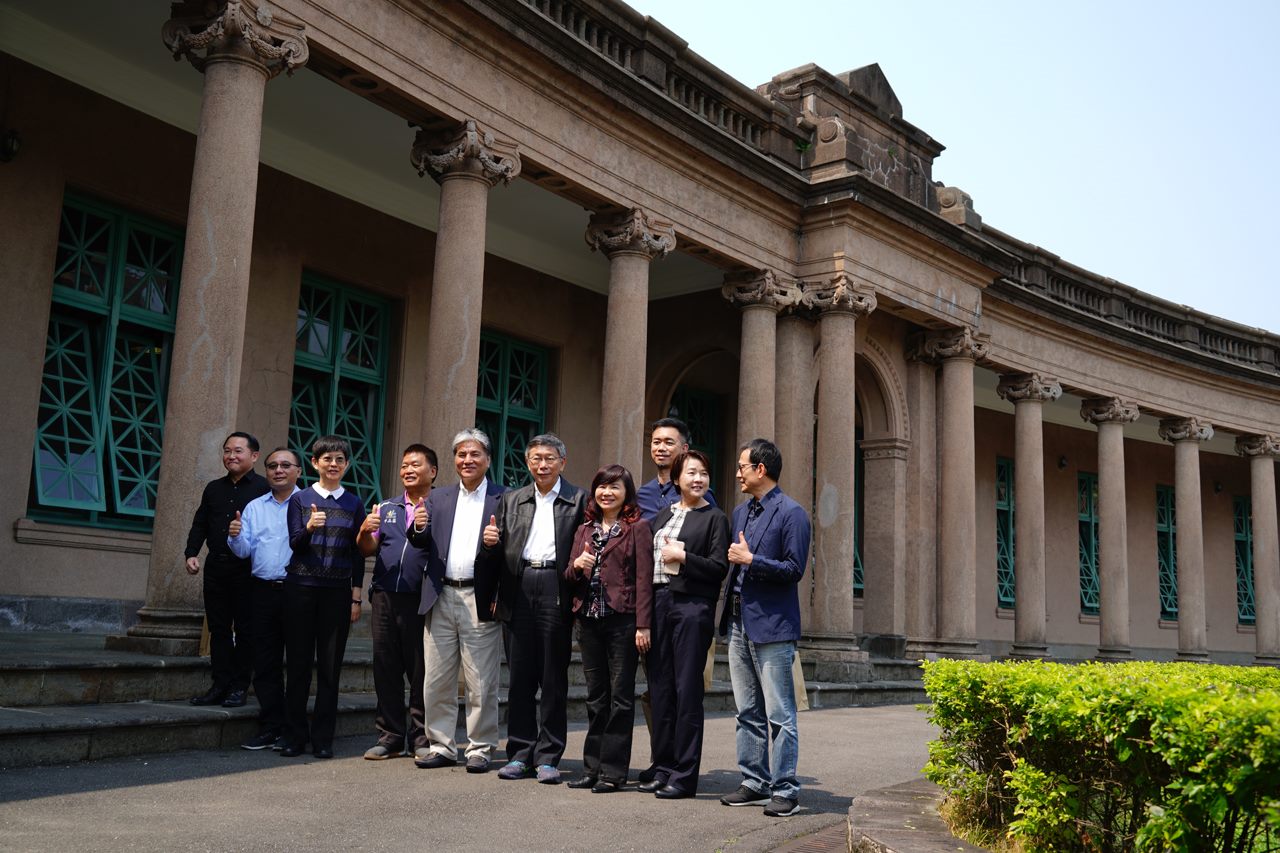Mayor Attends Film Premiere of Tracing Roots – Exploring the Secrets of Taipei’s High-Quality Water
 Taipei City Mayor Ko Wen-Je visited the Taipei Water Park in Gongguan on the morning of March 21 to attend the 2020 World Water Day Tracing Roots – Exploring the Secrets of Taipei’s High-Quality Water film premiere. He emphasized during his speech that in an effort to become a civilized city, Taipei must do more than the preservation of cultural relics because the interpretation of intangible culture is equally as important, hence there is still plenty of work to be done.
Taipei City Mayor Ko Wen-Je visited the Taipei Water Park in Gongguan on the morning of March 21 to attend the 2020 World Water Day Tracing Roots – Exploring the Secrets of Taipei’s High-Quality Water film premiere. He emphasized during his speech that in an effort to become a civilized city, Taipei must do more than the preservation of cultural relics because the interpretation of intangible culture is equally as important, hence there is still plenty of work to be done.
Ko commented that the Taipei Water Park was constructed in 1907, over one century ago. It was not only the first running water system in Taipei City but also served as a milestone in Taipei City’s modernization process. As a former military-controlled zone, it was transformed into a museum by the Taipei Water Department (TWD) after it was opened to the public, slowly turning the Water Department legacy into cultural heritage of Taipei City.
The mayor said that the reason for producing this film originated a year ago when he came to visit Treasure Hill, where he saw historic relics such as the century-old reservoir while walking through the water park. He told the director that in a bid to become a civilized city, Taipei City must be endowed with cultural qualities on top of contemporary architecture. If the ancient relics dating back to more than a century ago are restored and put on display, citizens will be able to appreciate how Taipei City’s running water system was developed over 100 years ago.
Mayor Ko remarked that, besides the endeavors of TWD colleagues, the film’s production also owes thanks to the PTS’s assistance. In the future, he hopes to produce videos on the Caoshan Water System because 97.5% of Taipei City’s water supply comes from Feitsui Reservoir and the remaining 2.5% is supplied via the 100-year-old Caoshan Water System.
He pointed out that Taipei has always been an advocate of wall-less museums. The Museum of Drinking Water is an integral part of the south Taipei museum district, located in the vicinity of Treasure Hill, Taipei City Hakka Cultural Park, NTU, Gongguan, Kishu An, and Jiahe New Village, etc. In particular, he has spoken to the NTU President about the Japanese building cluster at Wen-Luo-Ting, hoping that comprehensive planning can be implemented for the entire area.
The mayor mentioned that Professor Li Hong-Yuan raised a question concerning the progress of Liugong Canal, to which he replied that the city government has raised NT$ 80 million to demolish the walls near Xinsheng South Road and re-create Liugong Canal so that it can be visible from Xinsheng South Road to the NTU’s field. In addition, the city government has planted 400,000 azaleas since he came into office in the hope of transforming azalea – the school flower of NTU and city flower of Taipei City – into a distinguishing feature of the south city museum.
Lastly, Ko elaborated that just as Professor Li Hong-Yuan had suggested, urban aesthetics is a major component of Taipei City’s efforts in becoming a civilized city, in addition to the hardware. Beauty has no limits and requires constant refinement, hence there is still plenty of work to be done progressively. Today marks another minor milestone where the city government explains to citizens how running water was developed over a century ago in Taipei City.

![Taiwan.gov.tw [ open a new window]](/images/egov.png)
